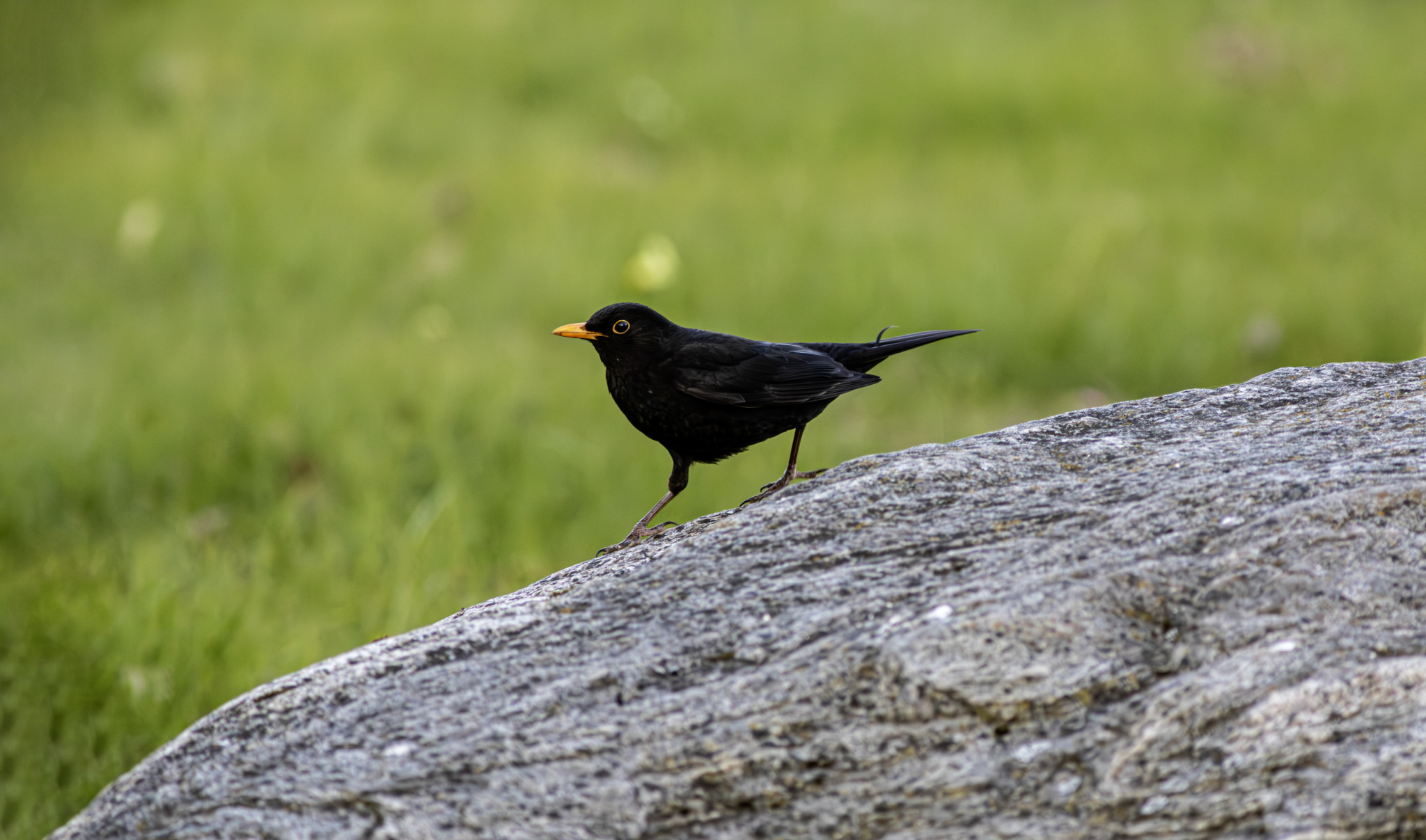The term “Blackbird” commonly refers to the Eurasian Blackbird, scientifically known as Turdus merula. This bird is a member of the thrush family, Turdidae. Here are some key features and characteristics of the Eurasian Blackbird:
- Appearance:
- Size: The Eurasian Blackbird is medium-sized, measuring about 23.5 to 29 centimeters (9.25 to 11.4 inches) in length, with a wingspan of 34 to 38 centimeters (13.4 to 15 inches).
- Color: Males are entirely black with a bright yellow-orange beak and eye-ring, while females and juveniles are generally brown with a slightly lighter throat and breast, and a darker mottling or streaking.
- Bill: The male’s bright yellow-orange bill is a distinctive feature, especially during the breeding season. Females have a more subdued brownish bill.
- Habitat:
- The Eurasian Blackbird inhabits a wide range of environments including forests, woodlands, gardens, parks, and urban areas.
- They are adaptable birds and are often seen in both rural and urban settings.
- Distribution:
- This species is widespread across Europe, North Africa, and parts of Asia. It has also been introduced to Australia and New Zealand.
- The Eurasian Blackbird is one of the most common and well-known birds in its range.
- Diet and Feeding Habits:
- The Eurasian Blackbird has an omnivorous diet that includes insects, earthworms, berries, and fruits.
- They forage on the ground, often seen hopping and flicking through leaf litter to uncover hidden prey.
- Behavior:
- Song: The male Eurasian Blackbird is known for its melodious and varied song, which it uses to establish territory and attract a mate. Their song is often heard at dawn and dusk.
- Territoriality: Males are highly territorial, especially during the breeding season. They will sing prominently from perches and engage in aggressive behavior to defend their territory from rivals.
- Breeding:
- Breeding season generally runs from March to July. During this time, males sing more frequently and defend their territories more aggressively.
- Females build cup-shaped nests using grass, leaves, and mud, usually in bushes or trees, but occasionally in unusual places such as buildings.
- The typical clutch consists of 3-5 eggs, which are bluish-green with reddish-brown spots. Both parents share in incubating the eggs and feeding the chicks once they hatch.
- Conservation Status:
- The Eurasian Blackbird is classified as Least Concern by the IUCN due to its large range and stable population.
- They are highly adaptable and thrive in a variety of habitats, including urban areas where they benefit from human-provided food sources.
- Cultural Significance:
- The Eurasian Blackbird is a familiar and beloved bird in many cultures. It features prominently in folklore, literature, and music.
- Its song is particularly cherished, and it is often regarded as a harbinger of spring.
In summary, the Eurasian Blackbird (Turdus merula) is a widespread and adaptable species known for its striking appearance, especially the males with their black plumage and yellow-orange beak. Their melodious song, adaptability to various habitats, and presence in urban and rural areas make them one of the most recognizable and appreciated birds in their range.
Views: 13
Subscribe to the newsletter:
